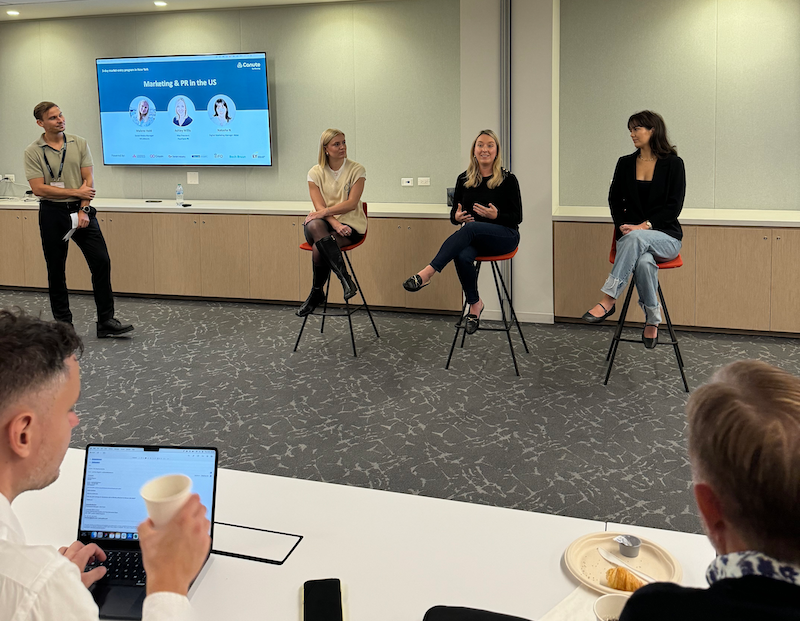As tech startups outside the United States begin to consider their market entry into the states, much planning is required across teams internally to ensure they can effectively capture the market needs. As plans come together, marketing and communications teams are often tasked with “making a splash” in U.S. media upon their arrival. It’s a tall task that when approached correctly, can set up a brand and PR program for long-term success.
I was recently invited to speak at an event by Canute, an organization that empowers entrepreneurs to grow their companies in new markets faster by providing local connections and market-specific knowledge. Speaking to a group of Danish tech startup founders, I shared best practices in media and PR efforts as each company begins their journey to reach customers in the U.S.
Among other marketing and communications discussions, I shared the following approach for global tech startups entering the U.S.:
Plan Ahead to Identify Key Media Targets: While many tech founders are likely aware of the top tier media and reporters who frequently cover tech innovation, from TechCrunch to Bloomberg, it’s the trade media and local media they mustn’t forget. Depending on the startup’s focus, various niche publications will exist that reach the very decision makers they want to reach. This familiarity with media requires some research hours, but it establishes the foundation for any successful media splash. The same holds true for local media, which can be a powerful brand awareness booster when recruiting and building a regional team.
Package Your U.S. Market Entry with Additional News Items: Oftentimes, simply announcing you’re entering the U.S. market isn’t enough to generate meaningful media coverage. However, pairing that news with more specifics or other updates can support a more meaningful story. Examples include: an office opening or local new hire, a recent funding round supporting the expansion, or pointing to recent industry news or stats available in the U.S. market to drive the connection to your startup. Each of these tactics bolster your market entry announcement by highlighting the impact, giving more depth to the story, and further timeliness.
Leverage Your Past Success to Establish a Strong Message in the States: In lieu of initial U.S. customers, tech startups from other parts of the globe have the opportunity to stand proudly on their previous accomplishments. This includes data points, sales or customer milestones, testimonials, and more. Weaving those tangible metrics of success into your U.S. communications strategy brings validity and authority to the organization.
After your initial U.S. entry announcement is complete, the real work begins! Once the initial press release and news articles are live, demonstrating how you’ll maintain momentum for your brand presence in the U.S. media is necessary. Successful media relations requires a multi-faceted approach that leverages your startup’s unique expertise and insights, showcases company announcements, and identifies opportunities to be a source to industry reporters when relevant industry news occurs. Collectively, this approach ensures your startup has a proactive plan to get in front of the media each month with new content and new perspectives, ultimately resulting in consistent media coverage.
Interested in learning more about a proactive media relations program for your tech startup entering the U.S.? Email us at [email protected].




